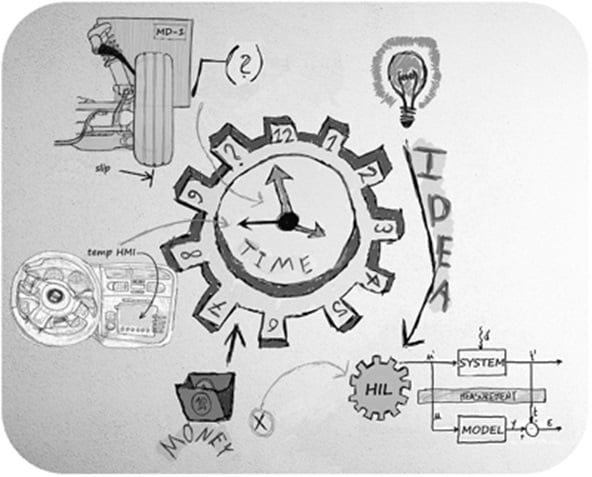Broadly speaking, today’s vehicles have significantly shorter production runs than the enduring products of yore. To wit: Volkswagen’s Beetle was manufactured for approximately 33 years. Some might say 65 years, but that’s another story . . .
Are there any recent examples of such long-lived model runs? Well, in 2014 the first-generation Volvo XC90 reached the end of a 12-year production run – which is certainly impressive. But any car that survives a decade would be an exception to the rule in the auto industry these days. Let’s face it: Modern carmakers have the arduous task of designing, developing, and deploying new products and major model updates at a tremendous pace.
When Less is More
Due to the coordinated efforts of global design and development teams, advanced manufacturing technologies, and the efficient use of cutting-edge simulation tools in recent decades, carmakers have systematically chopped cradle-to-curbside development cycles down to around two years. That means it takes less time to conceptualize, design, and produce a new car than it takes to grow a clump of asparagus in your garden. Incredible.
Simultaneously, right alongside these shrinking development cycles, there has been an explosion in the technological sophistication of cars. We now have driver assistance systems, active safety features, monitoring and control functions, all the emerging self-driving technologies – and, of course, the sensors, displays, driver interaction devices, computing power, and software implementations that are required to realize them.
This means that the vehicle engineering and development task has been doubly affected of late, i.e., there is much less available time to design and develop a car, and much more new vehicle content and technology with which to contend.
Beating the Clock
It should be no surprise that the tools required to engineer the cars we drive must be at least as sophisticated as the cars themselves. Off-line vehicle and sub-system simulation and virtual sign-offs, enabled by tools such as Hardware-in-the-Loop test benches, hold the promise of recovering the time and costs that might be lost on expensive, full-scale prototyping and physical testing (and re-testing). Such approaches have been key contributors to productivity improvements.
And when we speak of “productivity improvements” and strategies to tackle what might otherwise be an overwhelming array of tasks, we are really speaking of time management. Stepping beyond the usual definition of this term, we can actually look at simulation tools themselves through a time management lens, e.g., by viewing simulation as a meta-activity, we can make some interesting observations.
Real Time
Let’s focus on a particular type of simulation as a case in point: Engineering-class Driver-in-the-Loop (DIL) simulators. Here are few examples of direct alignments between DIL simulators as tools and classic time management strategies:
-
The 2-minute rule: If you can get it done in less than 2 minutes, don’t wait – do it now. DIL simulators are excellent time compressors. Changing tires? Done. Checking ECU settings on both European and North American roads? Done.
-
Create space for creativity: If you can clear your head, you can be more productive. The logistics of preparing and testing physical prototype vehicles often consumes more resource and energy than actually putting the acquired results to good use. Being inherently flexible in terms of test configurations, DIL simulator labs enable a decidedly advantageous re-allocation of key resources.
-
Close the loop: Ask the right questions in order to receive useful answers. DIL simulators, by their very nature, are action-oriented, interpersonal communication devices. Engineers and drivers are forced to speak to each other and explore new ideas, and perhaps most importantly - ask more well-informed questions based on immediate findings.
If "time management enabling tools” such as DIL simulators are in the mix, the modern paradigm facing carmakers becomes a bit less daunting. Twenty years ago, tasks such as certifying new cars for global markets like China, or proving out a dozen on-board system interactions did not even feature in typical vehicle development schedules. Nowadays this is par for the course. Having the right tools in place is essential.
To learn more about simulation trends and new tools to assist the vehicle development process, download our FREE eBook, Looking down the road: Harnessing the benefits of driving simulator technology:


